
- Flipped Waste
- No Waste

A flip flop made from bottle caps and textile waste, produced using discarded kitchen equipment. Developed a system of municipal impact hubs that is adaptable to each markets unique environments and turn local textile waste into value. Product recipes are open access on Github, the app is tool to guide users through the process of setting up the hub and start to manufacture. A logistic system will support the delivery of the local products to larger markets.
Plastic materials from waste.
The Fashion Agency, Johannesburg, South Africa & Under Armour, Baltimore, USA.
The background to the project is that We need to fundamentally change the way we approach design, material nature, desirability and value. The new system must consider the need to support and build local communities while at the same time reduce what is typically referred to as fashion imperialism, where typically western styles are promoted over local and indigenous styles.
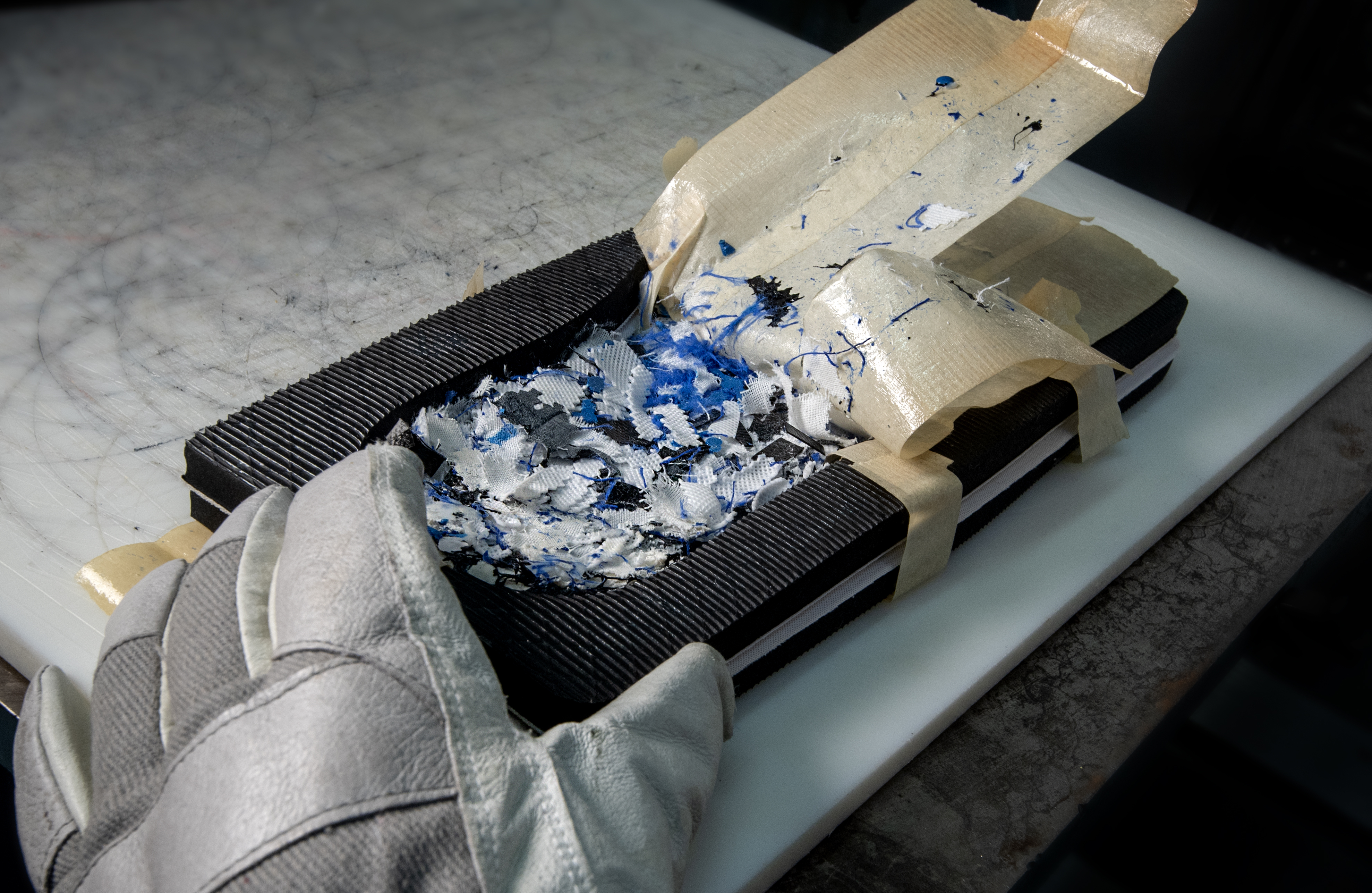
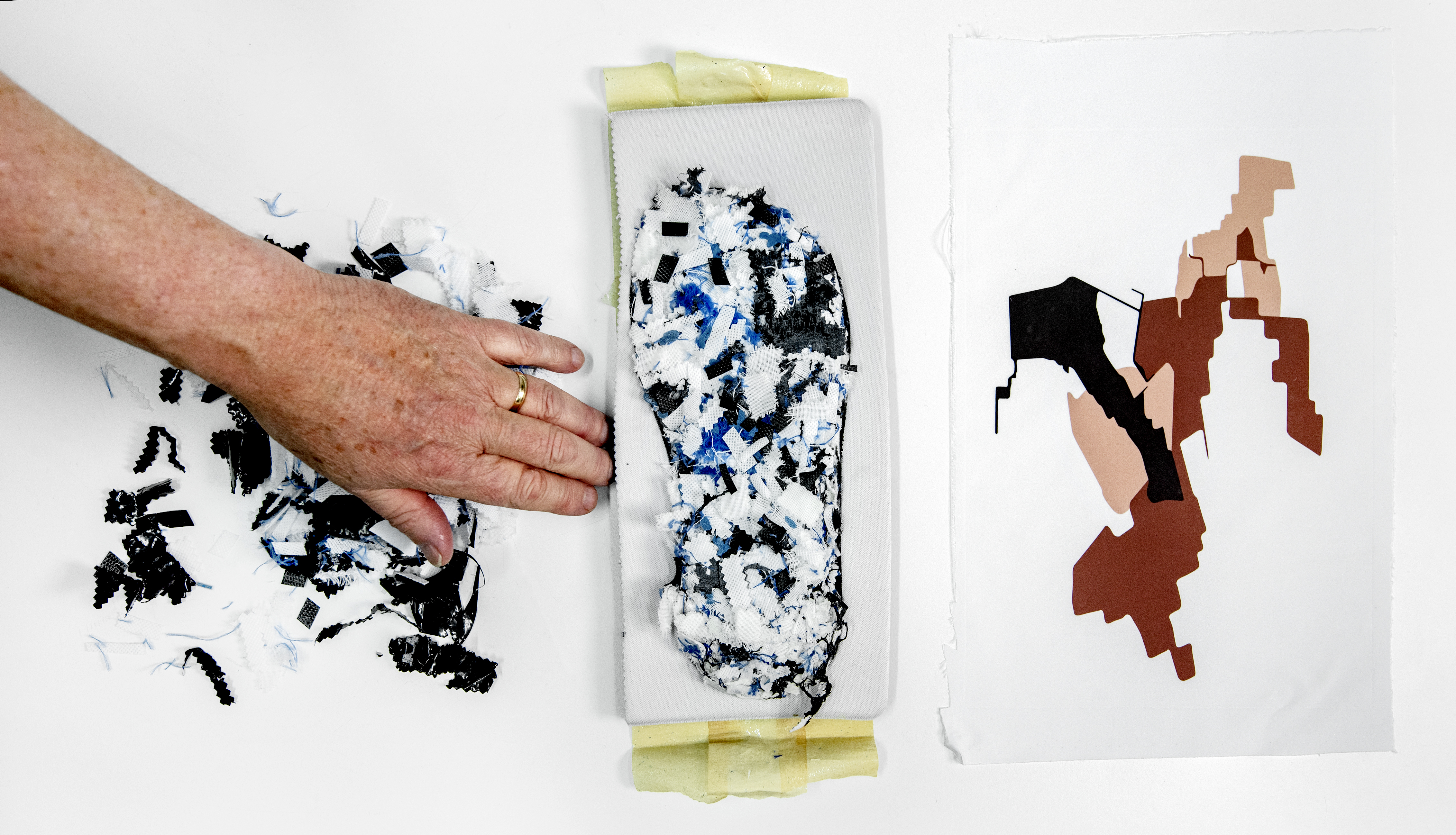
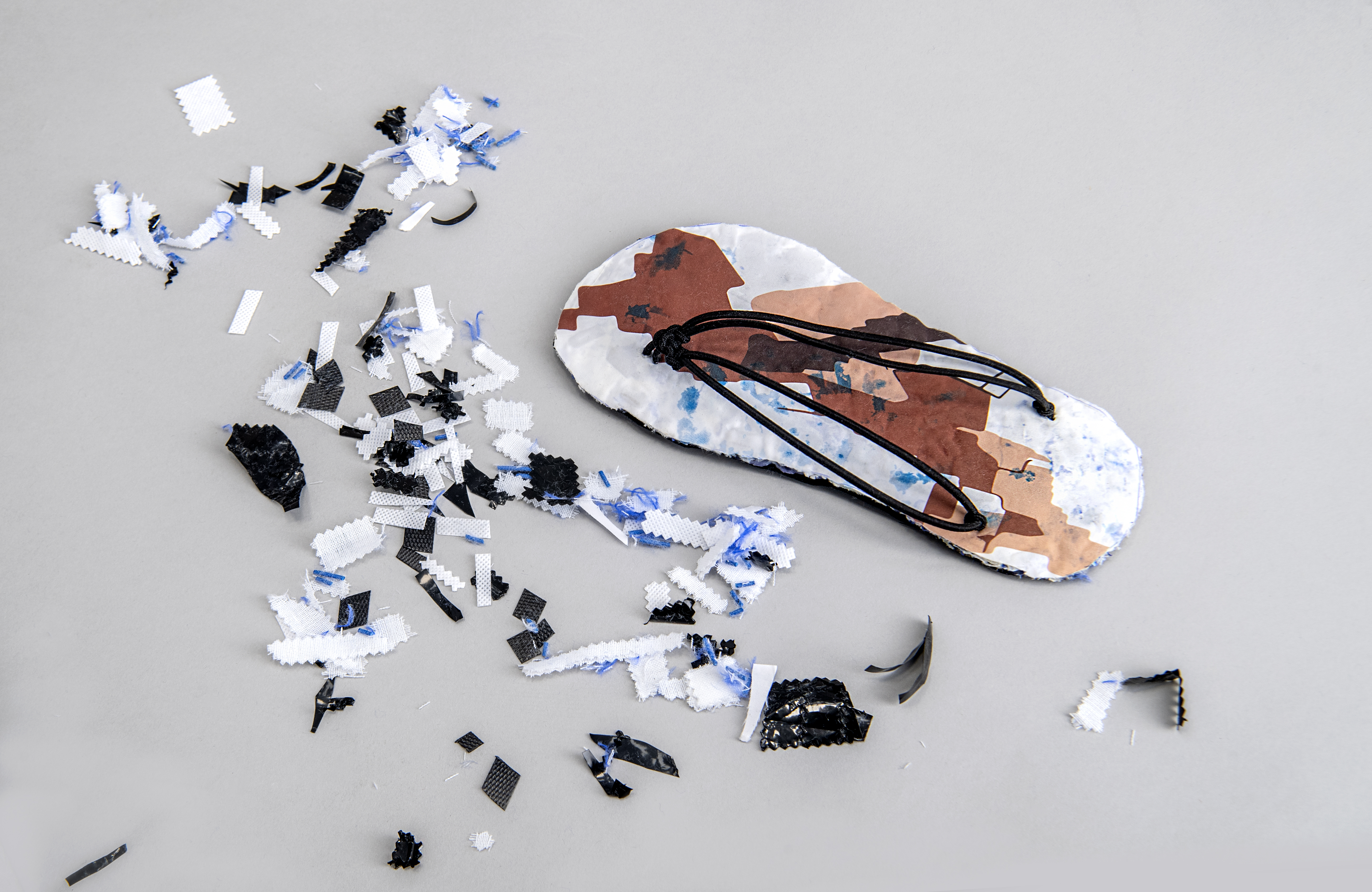
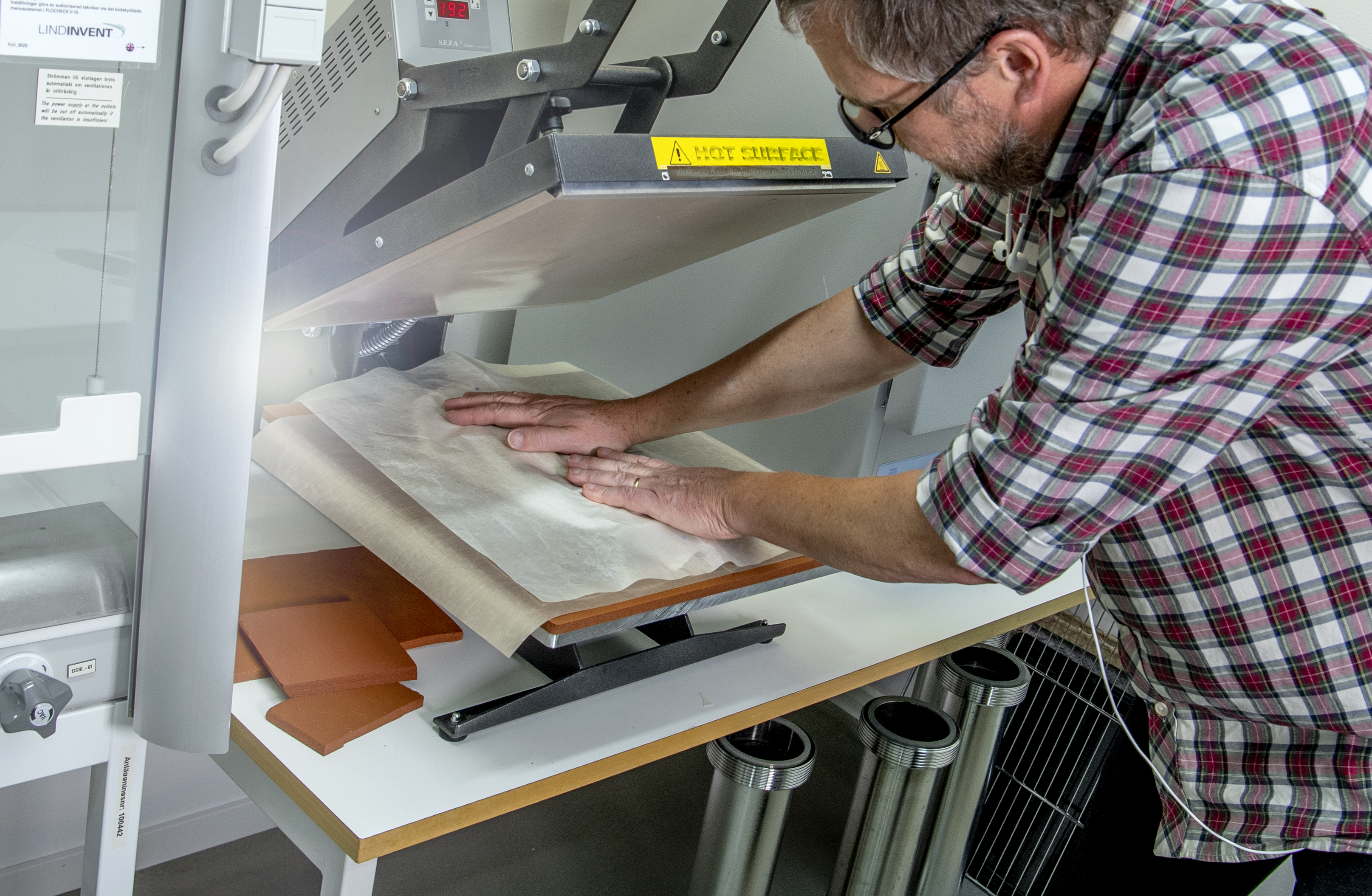
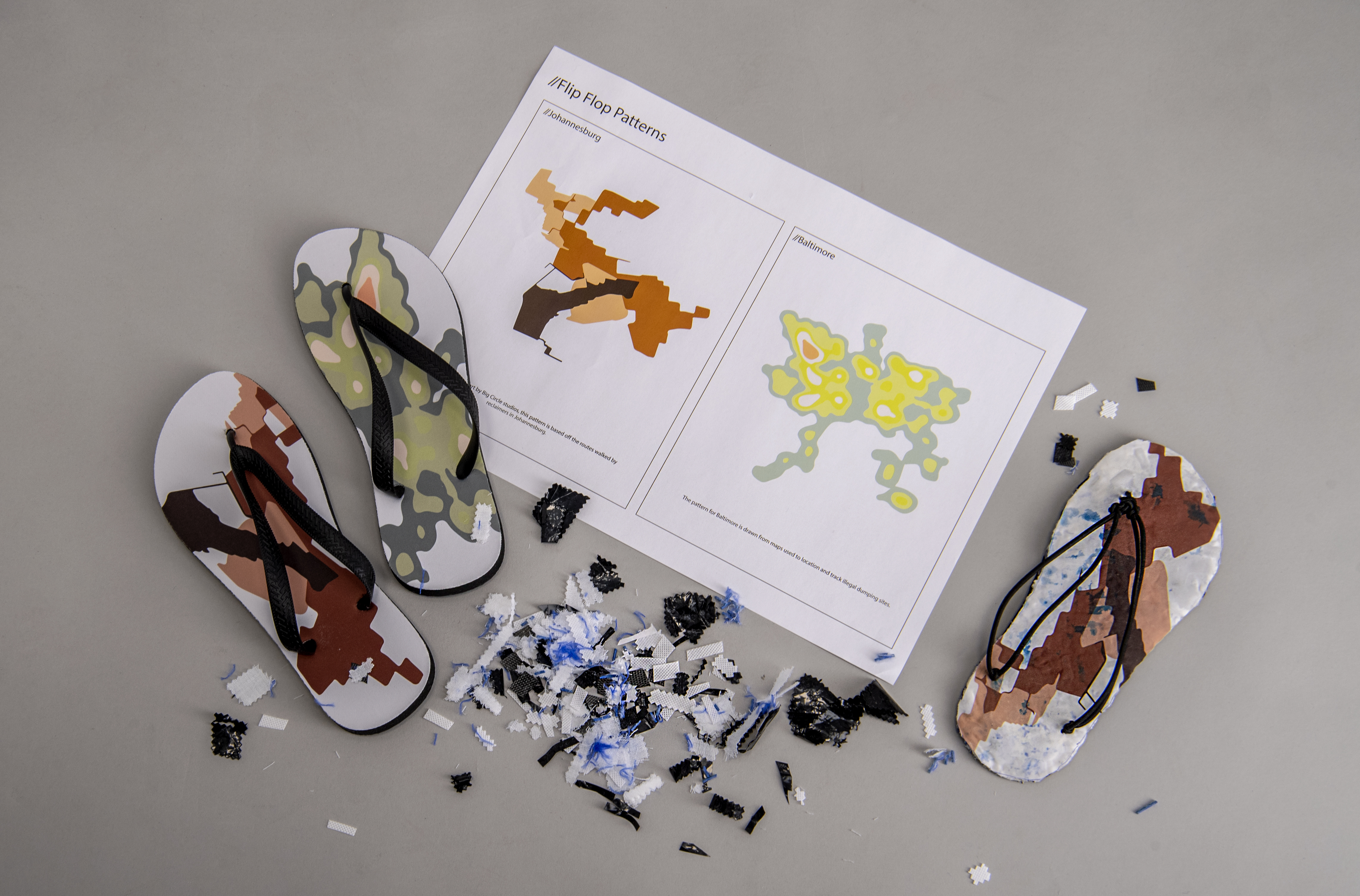


Bio-based materials and 3D-printed clothes that do not last very long. Could this be the answer to guilt-free consumption?
Maybe we can remove the ownership of garments and rather see the garments as a temporary service, like the shift from buying CDs to streaming music. In this way, the garments can be manufactured when the customer needs it, and be disposed of in household waste bins and become energy, not waste.
The material developed by Guringo Design Studio is called Streamateria and is made much like how a leaf is created – with its vein-like structure deciding the shape and a membrane tissue to complete it. The material is designed to die from the beginning, a perspective inspired by the ecosystem in the forest where there are no waste, only raw material for new resources.
All group objects:
Each decision during product development affects sustainability and circularity. To develop products with lower environmental impact, the design team needs to be well aware of each component and process, and their individual and combined effect on the final product and its longevity.
One challenge is having comprehensive knowledge regarding sutainability when it comes to all of the components and processes that are a part of the production and lifetime of the garment. An additional challenge is implementing alternative design methods that do not require virgin components. Ongoing research inspires and shows methods to re-make existing products to have new functionalities and designs with an upgraded look.
With higher traceability when it comes to materials, components, and processes, there are increased possibilities for more conscious decisions. If communicated well, this gives the consumer a better basis for decisions.
The current use of textile products is very unsustainable. We tend to buy many more products than we need and we throw away most of our textiles with the household waste, long before they are worn out.
The main challenges regarding resource efficient waste management includes improving collection rates, automated and material specific sorting technologies, and the scaling up of recycling technologies.
Intense research and industry innovation is focusing on the technology development needed, while policy and other financial instruments are developed at the national and EU levels. The need of the industry to secure recycled feedstock, in combination with upcoming EPR (Extended
Producer Responsibility) policies, will lead to new possibilities for the improved recycling of textiles.